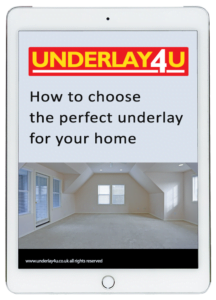When you’re decorating or renovating your home with wood floor, choosing the right products is a huge decision.
With so many options on the market and thoughts on ‘what’s fashionable’ evolving all the time. How do you make the correct choice yourself?
That’s where this article comes in. It’s super important that you read this before making your big decisions.
This article will take you through the detailed insights when choosing engineered wood flooring.
First, we look at what it is and how it compares to laminate.
Then we take a dive into the potential costs and available materials/finishes. As well as showing you how your decision can impact the resale value of your home.
Third, we explain the important decisions about when engineered wood flooring should and shouldn’t be used.
At the end, we give you a few tips on fitting the same style of product in all your rooms and the implications of not doing so.
Below is a common question for our customers, so let’s address it first…
What thickness underlay for engineered wood floor?
Underlay for wood flooring thicknesses from 2mm to 5.5mm. If you’re installing underfloor heating, then you want a low tog, thin product. You may also wish to consider integral moisture proof barriers to combat dampness issues. However, most underlays come with a damp-proof membrane so be sure to take this into account too.
What is engineered wood flooring?
Engineered wood flooring comes in boards and is a composition of wood materials. They fit together to form a flooring in the room of a home. It can be explained further by defining each section of the overall construction on each board.
The layers of each board are:
- Real hardwood top layer – The bit that takes the foot traffic.
- Ply middle layer – The layer that absorbs and supports the impact from the top layer.
- Wood bottom layer – the strong section that helps the boards remain stable
- Tongue click joint – Found down one side of the board it’s the part that allows the boards to connect.
- Groove click joint – The section running down the opposite side of the tongue joint. It slots cleanly (or should) around the tongue joint.
This construction means engineered floorboards have extremely good stability due to the layers. The more layers increases the stability. It doesn’t shrink or warp as much as solid wood.
Most come with a traditional tongue and groove joint for easier fitting.
Before fitting, there is usually an acclimatisation period and U4U normally suggests a minimum of 7 days in your home prior to installation.
Once fitted, you are still likely to experience movement and sometimes, they can take up to 12 months for the boards to truly settle. Don’t let that put you off though, it doesn’t usually cause any major problems if it’s installed by an expert.
Is engineered wood flooring the same as laminate?
This is another common question and it’s sure easy to confuse the two. However, laminate is very different to engineered wood flooring.
Engineered wood is more closely aligned to solid wood due to the natural wood layers
What is the difference between laminate and engineered wood flooring?
Laminate tends to be thinner, of which the composition is a thin wood board with an image on top covered by a clear wear layer for durability.
While laminate has been behind for much of the recent years, manufacturers are stepping up their game to compete.
For example:
Laminate manufacturers are producing thicker 12mm laminates that look even more like wood. In general, Laminate is often thinner, cheaper to buy and easier to install but less durable.
How long does engineered wood flooring last?
Engineered wood floor boards can last up to 20-25 years. They are by far the most durable when compared to laminate and carpet.
Carpet generally has a lifetime of 5-10 years depending on the wear and maintenance you give it. Laminate may get more scuffed a lot sooner, but again is dependent on the usage.
Further reading: https://www.thespruce.com/laminate-vs-engineered-wood-flooring-comparison-1822247
How much does wood flooring cost?
Price increases by square meter to be covered. It can vary a lot and often depends on the material type – walnut, ash, bamboo, oak. Or the finish – brushed, oiled, lacquered.
It can cost anywhere between £15-£60 per square meter based on the quality of product you choose. Below is a summary of all the potential costs – including prep and fit:
- Carpet Removal and Disposal: £2 – £3 per square meter
- Skirting Installation: £5 per meter
- Beading: £5-£7 per meter
- Door Trimming: £25 – £60 per door (if you choose a thicker board, you might need your doors trimming a the bottom)
Of course, if you opt to do any of the above tasks yourself, you are guaranteed to save yourself some cash.
Most floor boards have a top finish prior to purchase, but if you buy unfinished boards for cheaper, you can expect to incur additional costs. – costs of adding a finish:
- Brushed and Lacquered £30 – £50 per m²
- Brushed and Oiled £30 – £50 per m²
- Hand scraped £40 per m²
- Lacquered £20 – £70 per m²
- Oiled circa £50 per m²
To give you a guidance on the price of different materials:
- Ash = Most expensive approx. £60
- Oak = Most common £20 – 40
- Maple, Acacia, Cherry = More expensive than Oak at approx. £50
Does engineered wood flooring add value to your home?
This is a very important question when making any changes to your home.
There are many variables that impact the value of a home, so it’s difficult to attribute any increase in value directly to a new flooring installation.
Generally, wood is timeless. So, if you install it when you move in, it should stand the test of time so you don’t need to upgrade when you sell – of-course, that’s depending on how long you remain in your home.
It might cost around in total £1,000 to fit. However, you will save money over time due to durability and you can probably expect to it to make any home very appealing to buyers.
Therefore, the value added can be in the ability to sell your home a t a higher price based on the look and feel.
http://www.homeadviceguide.com/how-much-wood-flooring-cost/
How many boxes of wood flooring do I need?
The way to calculate how many boxes you need goes as follows:
Step 1- Calculate the area of your room in square meters.
Step 2 – find out how many square meters is in the box.
Step 3 – Divied the area to be fitted by the value in the box.
Here’s an example:
Total room size = 25m2
Total in box = 5m2
No. of boxes = 25/5 = 5 boxes
Where to buy cheap wood flooring – YOU GET WHAT YOU PAY FOR
This is a very valid question. You might want to cut costs by purchasing a cheaper product. However you will want to be cautious when looking for the cheapest options.
With wood floor, there’s a clear correlation between how much you pay and the benefits you receive. Which isn’t true for everything we buy these days.
Benefits come in the form of durability and stability, as well as the sales value of your home.




